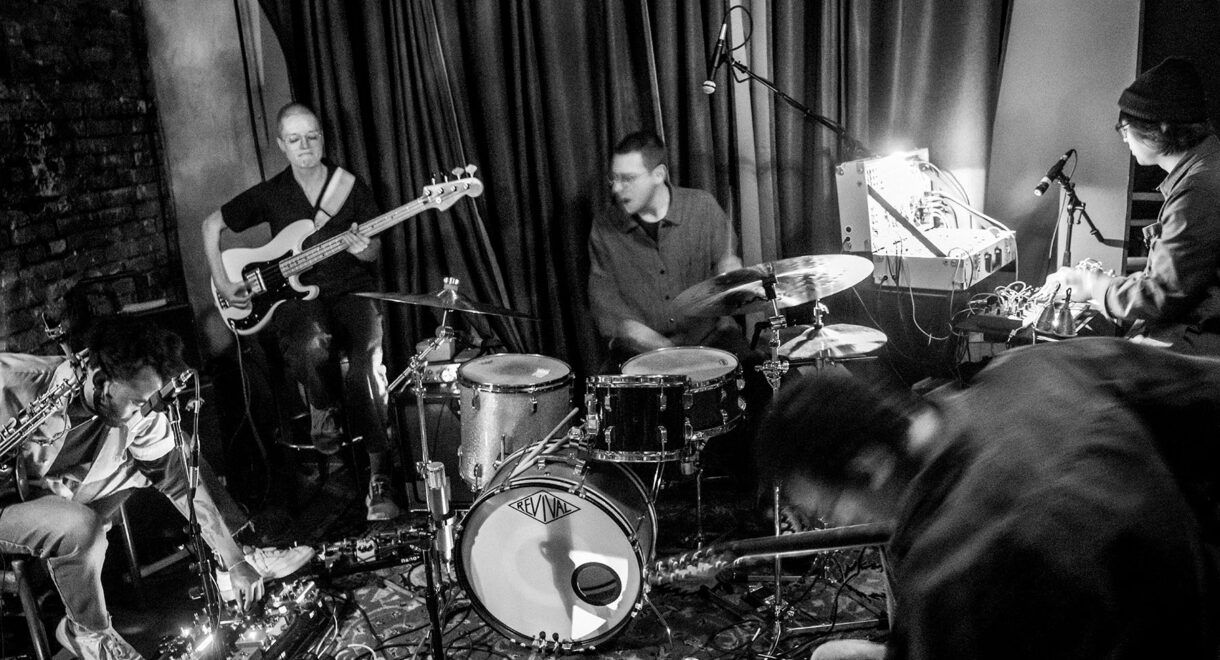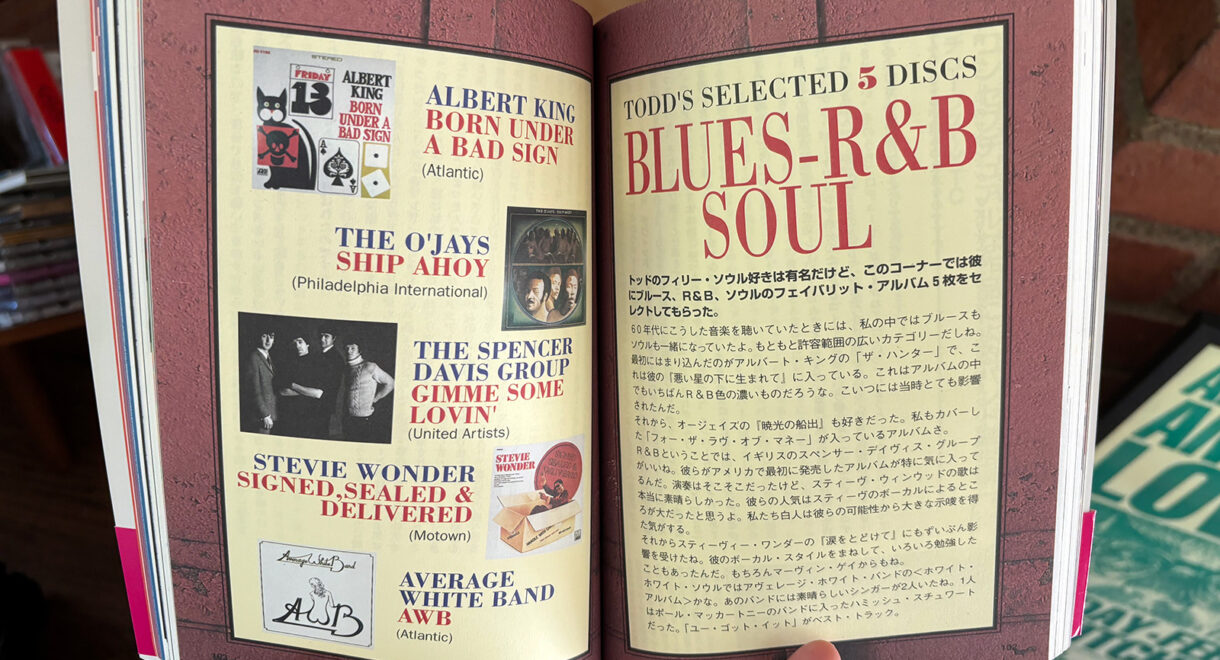In conversation with Small Medium Large, a new quintet from the burgeoning new West Coast jazz & improvised music scene. In 2018, LA-based jazz and post-rock guitarist Jeff […]
10 Unbelievable Performances by Saxophone Virtuoso Rahsaan Roland Kirk

Was Rahsaan Roland Kirk the coolest person who ever lived?
Rahsaan Roland Kirk unapologetically rode the edge of absurdity his entire life and regularly left audiences gobsmacked in the wake of his on-stage antics. His performances, where he was known for simultaneously playing independent melodies on 2-3 different wind instruments, were punctuated by meandering comedic revelations and political satire.
At age 14 in the late 1940s, Kirk was already blind and beautifully playing three saxophones at the same time. Even then, his compositions were so emotionally moving that listeners in the packed venues where he played would find themselves misty-eyed at the young expert. But he was also maligned during his time because he joyously veered away from the jazz canon and the furrow-browed expectation that its musicians were somber, intimidating and serious. For much of his career Kirk, who died in 1977 at 42, was labeled a showman. But he shook off this crass judgement while always maintaining his lighthearted demeanor, and made room for himself by leading his band of revolving musicians on some of the most well respected stages in the world.
Kirk’s recordings are undeniably beautiful, but they pale in comparison to his vitality live. The below roundup features some of our favorite performances. From playing instruments using his nose to sharing cocaine with audience members mid performance, you actually have to see it to both believe it and appreciate it. This collection of videos was selected to give you a well rounded understanding of who Kirk was.
(Roland Kirk – Tenor saxophone and soprano saxophone, Charles McGhee – Trumpet, Dick Griffin – Trombone, Ron Burton – Piano, Henry Pearson – Bass, Robert Shy – Drums, Joe Texidor – Percussion)
It’s best to start out easy, and this 1970’s performance of Kirk and the Vibration Society performing “Sweet Fire” shows his incredible range and a few of his signature moves. He effortlessly duets with himself playing a tenor saxophone in one hand and a customized Manzello soprano sax in the other, and casually uses circular breathing to extend notes and melodies to seemingly infinite lengths. At 3:22 he drops both instruments and starts to sing in a ghostly howl with beautiful intonation; he would even sing while playing the flute or sax — which you can see in a couple of the videos below.
(Roland Kirk – Flute, recorder and saxophone, Ron Burton – Piano, Henry “Pete” Pearson – Bass, Robert Shy – Drums, Joe “Habao” Texidor – Percussion)
This video of Kirk features his outrageous performance at the 1972 Montreux Jazz Festival. It opens with him playing the flute with his mouth and the soprano recorder with his nose. This wasn’t to get a laugh, but because he couldn’t find a way to play more than one wind instrument at time. He always aimed to play in relation to a counterpoint, which is why he often played multiple instruments. He also played the flute while singing through notes which sounds both a bit like a harmonica and like nothing you’ve ever heard.
Finally, at 5:51 Kirk stops playing during a break, doles out what appears to be cocaine with a tiny spoon and invites the audience up for a sniff. Several people come up to the stage and hoover up what Kirk is serving before he goes back to playing three saxophones.
(Roland Kirk- Stylophone, Ron Burton – Piano, Vernon Martin – Bass, Jimmy Hopps – Drums and Joe “Habao” Texido – Percussion)
This recording is of a set that the Rashaan Roland Kirk Quartet did when opening up for a Led Zeppelin concert in 1969 at the Oakland Coliseum (you can see the flyer for the night here). In this cover of Aretha Franklin’s “Say a Little Prayer for You,” Kirk opens this wild performance with a passionate monologue about untimely spiritual death, then at 1:30 the band erupts with an energetic fervor that’s tight and memorable. Kirk also brings out his stylophone and a swinging children’s kazoo that keeps things alive and fresh.
(Roland Kirk – Saxophone, Ron Burton – Piano, Steve Novosel – Bass, and Jimmy Hopps – Drums)
“The Inflated Tear” is perhaps Kirk’s most famous composition, and in this 1967 performance of the song in Prague, he begins with wacky, slinky-sounding children’s toys before playing this solemn tune. He simultaneously blows a three-saxophone solo for the first half of the song before the accompanying band comes in and uplifts the mood. It’s the most understated performance on this list — but no less emotionally stirring.
(Roland Kirk – Saxophone, Hilton Ruiz – Piano. Henry Pete Pearson – Bass, Sonny Brown – Drums, Todd Barkan – Percussion)
After Kirk makes fun of the sound engineer a bit in this 1975 performance at Montreux Jazz, he finally gets the volume just right for Kirk to play a recording of piano player Fats Waller — from a cassette player strapped to Kirk’s saxophone. Waller laid the groundwork for modern jazz piano in the ‘30s and ‘40s, but because he made jokes and smiled while he played he was written off by many so-called “serious” musicians. There’s little doubt that Kirk saw himself in Waller’s tribulations — you can hear it in his emotional tone. Still, Kirk was no stranger to joy. After he delivers the moral of the story the band jumps into Kirk’s composition “Bright Moments”
(Roland Kirk – Flute and George Gruntz – Piano)
Kirk uses a music box in this performance of “Lover Man” in 1959, and it plays something that sounds like a lullaby. It suits the delicate nature of the song. Other than that, Kirk doesn’t break too many conventions; this is a rare recording where you don’t even see even a hint of a smile.
(Roland Kirk – Saxophone, Lenny White – Drums, Stanley Clarke – Bass, McCoy Tyner – Piano)
A dapper Kirk plays this unreal 1975 television performance with McCoy Tyner and Stanley Clarke, both of whom were known for their work with John Coltrane. This is hard jazz at its best. It’s apparent that Kirk is about to wow the audience when he lifts his arm high and quickly pumps it victoriously after he’s introduced. From 4:00 – 5:00, Kirk sustains two saxophones using his expertise in circular breathing, but that was hardly his greatest circular breathing feat. His longest sustained solo was a nonstop performance for two hours and 21 minutes for a 1972 crowd in London.
(Rashaan Roland Kirk – Flute, recorder and saxophone, Ron Burton – Piano, Henry “Pete”, Pearson- Bass, Robert Shy – Drums, Joe “Habao” Texidor – Percussion)
This is the second performance on the list from the ‘72 Montreux Jazz Festival and it finds Kirk at a creative peak. Backed by his quartet, who can’t help but smile when he squeals and hums his sax in what edges into free jazz, Kirk nonetheless manages to retain a form that even a novice listener can follow.
(1971 Rashaad Roland Kirk – Sax and recorder , Roy Haynes – Drums, Archie Shepp – Sax, Charles Mingus – Bass, Charles mcgee – Trumpet Sonelius Smith & Dick Griffin, Henry “Pete” Peterson, Joe Texidor & Maucrice McKinley – percussion)
TV host Ed Sullivan invited Kirk to assemble the top Black classical jazz artists in 1971 and he was quick to pick some of the greats. It’s intense to see Kirk, Charles Mingus and a mesmerizing Archie Shepp bop along with careless abandon. Their goal was to show America what was hot in jazz and they held nothing back. There is a call-and-response tête-à-tête with Mingus and Kirk that occurs near the beginning of the video, as well as a Bayou-style jazz break at the end.
The final video is a rare interview of Rahsaan Roland Kirk in 1972. In it, he opens up about being a Black, blind musician devoted to analog instruments. It’s not a musical performance. Rather, it’s a look into the mind behind the legend. Listening to him talk makes every video on this list even more revelatory.










